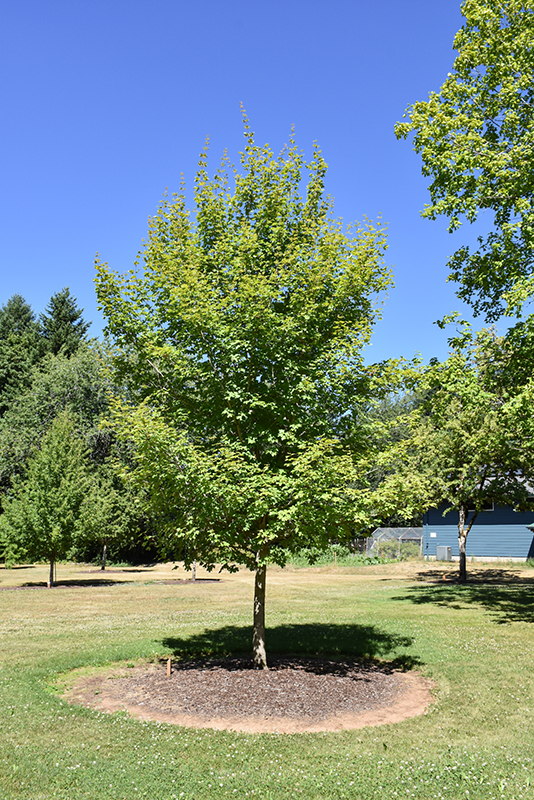Mesa Glow® Bigtooth Maple
Acer grandidentatum 'JFS-NuMex 3'
Height: 28 feet
Spread: 18 feet
Sunlight:
![]()
Hardiness Zone: 4
Other Names: Canyon Maple, Wasach Maple, Western Sugar Maple
Brand: J. Frank Schmidt & Son Co.
Description:
This is a very hardy variety which thrives well in dry conditions and urban pollution; an upright oval growth habit with a showy display of orange-red to red in the fall; a great landscape or street tree and a top choice for the inter-mountain west
Ornamental Features
Mesa Glow® Bigtooth Maple is primarily valued in the landscape for its decidedly oval form. It has rich green deciduous foliage. The glossy lobed leaves turn outstanding shades of orange and in the fall. The furrowed gray bark adds an interesting dimension to the landscape.
Landscape Attributes
Mesa Glow® Bigtooth Maple is a deciduous tree with a shapely oval form. Its average texture blends into the landscape, but can be balanced by one or two finer or coarser trees or shrubs for an effective composition.
This is a relatively low maintenance tree, and should only be pruned in summer after the leaves have fully developed, as it may 'bleed' sap if pruned in late winter or early spring. It has no significant negative characteristics.
Mesa Glow® Bigtooth Maple is recommended for the following landscape applications;
- Accent
- Shade
Planting & Growing
Mesa Glow® Bigtooth Maple will grow to be about 28 feet tall at maturity, with a spread of 18 feet. It has a low canopy with a typical clearance of 4 feet from the ground, and should not be planted underneath power lines. It grows at a medium rate, and under ideal conditions can be expected to live for 80 years or more.
This tree should only be grown in full sunlight. It prefers to grow in average to moist conditions, and shouldn't be allowed to dry out. It is not particular as to soil type, but has a definite preference for acidic soils, and is subject to chlorosis (yellowing) of the foliage in alkaline soils. It is highly tolerant of urban pollution and will even thrive in inner city environments. This is a selection of a native North American species.







